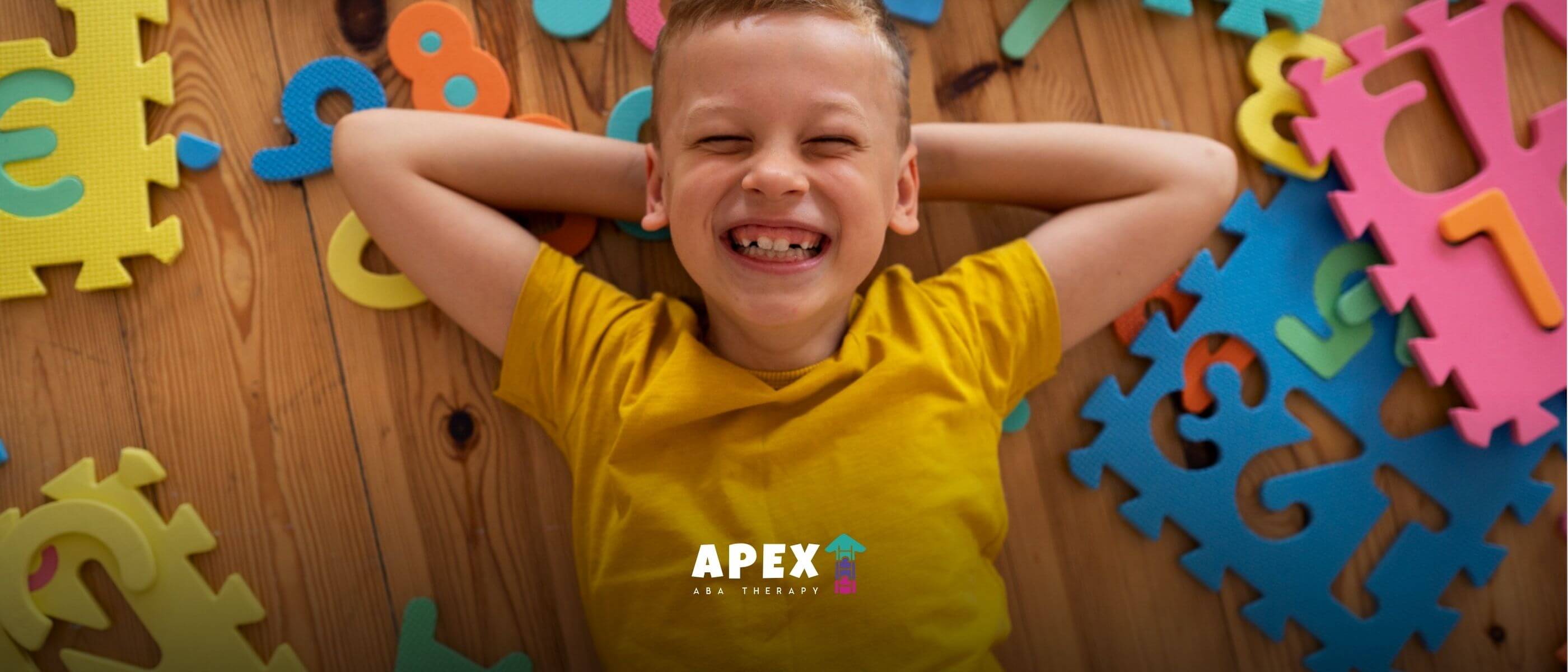What is Behavior Cusp?
Behavior cusps are often the result of a person acquiring a new skill or ability that opens up new opportunities and possibilities.
.jpg)
What is Behavior Cusp?
Understanding Behavior Cusp
In the field of Applied Behavior Analysis (ABA), the concept of behavior cusp plays a significant role in understanding and promoting skill development in individuals with autism. This section will provide an introduction to behavior cusp and explain its definition.
Introduction to Behavior Cusp
Behavior cusp refers to a pivotal point in an individual's behavior repertoire where acquiring a specific skill leads to significant and widespread improvements in their overall functioning. It serves as a catalyst for further skill development, allowing individuals to gain access to new environments, activities, and social interactions.

What is a Behavior Cusp?
A behavior cusp is characterized by three key components: skill acquisition, generalization, and maintenance.
- Skill Acquisition: The individual acquires a new skill that is essential for their overall development. This skill acts as a foundation for acquiring more complex behaviors and opens up opportunities for further learning.
- Generalization: The newly acquired skill is not limited to a specific context or environment. It generalizes across various settings, people, and situations. This enables the individual to demonstrate the skill consistently, regardless of the circumstances.
- Maintenance: The acquired skill is maintained over time, ensuring its continued use and effectiveness. The individual persists in using the skill even when faced with challenges or distractions.
Identifying behavior cusp is crucial for parents, caregivers, and professionals working with individuals with autism. Recognizing behavior cusps allows for targeted interventions and strategies that can promote skill development and enhance the individual's quality of life.
Examples of Behavior Cusp
To better understand behavior cusp, let's consider a few examples:
- Learning to Read: When a child with autism learns to read, it opens up a world of possibilities. Reading skills serve as a behavior cusp, allowing the child to access information, communicate effectively, and participate in academic and social activities.
- Toilet Training: For individuals with autism, mastering toilet training is a behavior cusp that brings independence and enhances their participation in daily activities. It allows them to gain control over their personal hygiene and reduces dependence on others.
- Social Skills: Acquiring social skills, such as turn-taking, initiating conversations, and understanding non-verbal cues, can be a behavior cusp. These skills enable individuals with autism to engage in meaningful interactions, build relationships, and navigate social situations successfully.
Importance of Recognizing Behavior Cusp
Recognizing behavior cusps is vital for designing effective intervention strategies in ABA. By identifying behavior cusps, professionals can focus on teaching pivotal skills that have the potential to bring about significant improvements in the individual's overall functioning.
This targeted approach optimizes the individual's learning experience and maximizes their potential for growth and development.
Understanding behavior cusp in the context of ABA allows parents and caregivers to appreciate the milestones their loved ones achieve and to support their continued progress. It emphasizes the importance of providing opportunities for skill acquisition, generalization, and maintenance, ultimately fostering independence and a higher quality of life for individuals with autism.
Key Components of Behavior Cusp
To fully understand behavior cusp, it is important to explore its key components. These components play a significant role in the development and progression of behavior change. The main components of behavior cusp are skill acquisition, generalization, and maintenance.
Skill Acquisition
Skill acquisition refers to the process of learning and acquiring new skills or behaviors. In the context of behavior cusp, it involves individuals developing a set of skills that act as a foundation for further learning and behavior change. By focusing on skill acquisition, individuals can acquire new abilities that open doors to additional opportunities for growth and development.
The acquisition of skills within a behavior cusp can occur through various methods, such as direct instruction, modeling, shaping, and reinforcement. These techniques help individuals learn new behaviors and abilities, setting the stage for further progress.
Generalization
Generalization is another crucial component of behavior cusp. It refers to the ability to transfer learned skills from one context or situation to another. When a behavior is generalized, it means that the individual can demonstrate the acquired skill in different settings, with different people, and under various conditions.
Generalization is essential because it allows individuals to apply the skills they have learned to real-life situations. It ensures that the acquired behaviors are not limited to a specific environment but can be utilized in a variety of scenarios.
Generalization helps individuals become more adaptable and flexible in their behaviors, increasing their independence and overall functioning.
Maintenance
Maintenance refers to the ability to sustain and retain the learned behaviors over time. Once a skill has been acquired and generalized, it is crucial to ensure that it is maintained consistently. Maintenance involves practicing and reinforcing the learned behaviors to prevent regression or loss of the acquired skills.
Consistent practice and reinforcement are necessary to maintain the behavior in different contexts and situations. By reinforcing the behavior regularly, individuals are more likely to retain and continue to demonstrate the learned skills over an extended period.
Understanding the key components of behavior cusp, namely skill acquisition, generalization, and maintenance, is vital in comprehending the process of behavior change and development.
These components work together to create a solid foundation for progress and growth in individuals, particularly those with autism. By focusing on these components, caregivers and professionals can design effective strategies and interventions to promote positive behavior change and skill development.
Identifying Behavior Cusp
Recognizing behavior cusps is essential for understanding the potential for skill development and growth in individuals.
By identifying behavior cusps, parents and practitioners can design effective interventions and support systems. Here are some examples of behavior cusps and the importance of recognizing them.
Examples of Behavior Cusp
Behavior cusps can manifest in various ways, depending on the individual and their specific circumstances. Here are a few examples of behavior cusps:
- Reading: A child with autism who learns to read experiences a behavior cusp. This skill acquisition opens up a world of opportunities for the child, enabling them to access information, communicate effectively, and participate in educational settings.
- Self-care skills: Another example of a behavior cusp is when an individual with autism learns self-care skills, such as dressing independently, brushing their teeth, or tying shoelaces. Acquiring these skills enhances their independence and promotes self-confidence.
- Social interactions: For individuals with autism who struggle with social interactions, a behavior cusp may occur when they begin to initiate and engage in conversations, make eye contact, or demonstrate empathy. These newfound social skills can significantly improve their relationships and overall quality of life.
Importance of Recognizing Behavior Cusp
Recognizing behavior cusps is crucial for several reasons:
- Targeted interventions: Identifying behavior cusps allows parents and practitioners to focus on specific skills that have the potential to lead to significant changes in a person's life. By targeting these behavior cusps, interventions can be designed to support and enhance skill acquisition.
- Setting realistic goals: Understanding behavior cusps helps in setting realistic and meaningful goals for individuals with autism. By recognizing their potential for growth and development, appropriate goals can be established, fostering a sense of achievement and motivation.
- Providing appropriate support: Recognizing behavior cusps enables parents and practitioners to provide the necessary support and resources to foster skill development. It allows them to tailor interventions, teaching strategies, and environmental modifications to maximize the individual's progress.
Identifying behavior cusps empowers parents, practitioners, and individuals with autism to unlock their potential and facilitate skill development. It is a crucial step in promoting growth, independence, and overall well-being.
Behavior Cusp in ABA
Applied Behavior Analysis (ABA) is a therapeutic approach widely used to support individuals with autism. Within the field of ABA, the concept of behavior cusp plays a significant role in understanding and promoting skill development. Let's explore the relationship between behavior cusp and applied behavior analysis, as well as strategies for promoting behavior cusp.
Behavior Cusp and Applied Behavior Analysis
Behavior cusp is a term used in ABA to describe a specific type of behavior change that has far-reaching effects. It refers to a behavioral development that opens up new opportunities for learning and independence. When a behavior cusp occurs, it leads to the acquisition of other related skills, increases generalization, and promotes maintenance of the learned behaviors.
ABA practitioners recognize behavior cusp as a crucial milestone in skill development. By targeting specific behaviors that serve as behavior cusps, professionals can create a ripple effect of progress in various areas of an individual's life. Behavior cusps serve as gateways that unlock new possibilities for growth and development.
Strategies for Promoting Behavior Cusp
Promoting behavior cusp requires careful planning and implementation of evidence-based strategies. ABA practitioners utilize various techniques to facilitate behavior cusps, depending on the individual's unique needs and goals. Here are some strategies commonly used in ABA to promote behavior cusp:
- Task Analysis: Breaking down complex skills into smaller, manageable steps can facilitate skill acquisition and increase the likelihood of behavior cusp. By teaching prerequisite skills systematically, individuals can progress towards behavior cusps more effectively.
- Prompting and Prompt Fading: Prompting refers to providing cues or assistance to guide individuals through a behavior. Gradually fading prompts over time helps individuals develop independence and generalize the behavior to new situations.
- Reinforcement: Employing positive reinforcement is a key component of ABA. Providing rewards or incentives for desired behaviors can reinforce their occurrence and increase the likelihood of behavior cusp.
- Generalization Training: Generalization refers to the ability to apply learned skills across different settings, people, and materials. ABA practitioners focus on teaching individuals to generalize behaviors to ensure the acquired skills are meaningful and functional in various contexts.
- Maintenance Strategies: Maintenance involves ensuring that the learned behaviors are retained over time. ABA practitioners develop maintenance plans to systematically review and reinforce skills to prevent regression.
By implementing these strategies and leveraging the principles of ABA, practitioners can increase the likelihood of behavior cusp and promote meaningful skill development for individuals with autism.
Understanding the relationship between behavior cusp and applied behavior analysis is crucial for parents and caregivers of individuals with autism. By recognizing behavior cusps and employing effective strategies, they can support their loved ones in reaching their full potential and achieving greater independence in various aspects of their lives.
Impact of Behavior Cusp
Understanding the impact of behavior cusp is crucial, especially for individuals with autism. Behavior cusp plays a significant role in their skill development and overall well-being. Let's explore the benefits of behavior cusp for individuals with autism and its role in skill development.
Benefits for Individuals with Autism
Behavior cusp holds various benefits for individuals with autism. It opens up opportunities for them to acquire new skills, expand their capabilities, and enhance their independence. Some key benefits include:
- Skill Expansion: Behavior cusp allows individuals with autism to develop crucial skills that can significantly improve their daily functioning. By targeting behavior cusps, individuals can gain new abilities that were previously challenging for them.
- Generalization: Behavior cusp promotes generalization, which means individuals can apply the newly acquired skills across different settings, people, and situations. This enables them to use their skills in real-life scenarios and enhances their overall adaptive functioning.
- Increased Independence: As individuals with autism master behavior cusps, they become more self-sufficient and independent in various aspects of their lives. This increased independence can have a positive impact on their overall quality of life and sense of accomplishment.
Role of Behavior Cusp in Skill Development
Behavior cusp plays a vital role in skill development for individuals with autism. By targeting behavior cusps, professionals can design effective interventions and strategies to facilitate skill acquisition and generalization. Here's a deeper look into the role of behavior cusp in skill development:
- Identifying Crucial Behaviors: Behavior cusps help professionals identify the essential behaviors that, once acquired, can lead to significant skill development. By focusing on these behaviors, therapists can create targeted interventions to support the individual's progress.
- Building on Existing Skills: Behavior cusps build upon existing skills, allowing individuals to expand their abilities in a structured manner. This sequential approach helps in breaking down complex skills into smaller, achievable steps, making the learning process more manageable.
- Promoting Generalization: Behavior cusps facilitate the generalization of skills, enabling individuals to utilize their newly acquired abilities in various settings and situations. This generalization is crucial for individuals with autism to apply their skills in real-world contexts and achieve functional independence.
- Ensuring Maintenance: Behavior cusps also address skill maintenance, ensuring that the acquired skills are retained over time. By reinforcing and practicing the targeted behaviors, individuals can sustain their progress and continue to benefit from the skills they have developed.
Understanding the impact of behavior cusp on individuals with autism is essential in maximizing their potential for growth and development. By recognizing the benefits and role of behavior cusp in skill development, parents, therapists, and educators can work together to create effective interventions and support systems that promote the overall well-being and success of individuals with autism.
FAQs
Can behavior cusps occur in adults as well as children?
Absolutely! While behavior cusps are often associated with childhood development, they can occur at any age. In fact, many adults experience behavior cusps when they learn a new skill or take on a new challenge.
Are there certain types of behaviors that are more likely to be a cusp than others?
It's hard to say for sure, as everyone's experiences and circumstances are unique. However, behaviors that have a significant impact on a person's daily life and routines are more likely to be a cusp. For example, learning to speak a second language could be a cusp for someone who frequently travels abroad.
How can I help someone else experience a behavior cusp?
The best way to help someone experience a behavior cusp is to provide them with opportunities for growth and learning. Encourage them to try new things and support them in their efforts. Remember that everyone learns at their own pace and in their own way, so be patient and understanding.
Can behavior cusps ever have negative consequences?
While behavior cusps are generally positive changes, there is always the possibility of unintended consequences. For example, if someone learns how to use drugs or alcohol, this could be considered a negative behavior cusp. It's important to remember that not all changes are good ones and that we should strive for positive behavior cusps whenever possible.
Is it possible for someone to experience multiple behavior cusps in their lifetime?
Absolutely! In fact, many people experience multiple behavior cusps throughout their lives as they continue to learn and grow. Each new cusp builds on the previous ones and opens up even more opportunities for growth and development.
Conclusion
Behavior cusps are an important concept in behavior analysis that can have significant and far-reaching effects on a person's life. By understanding what behavior cusps are and how to identify them, we can better support individuals in their learning and growth. So keep an eye out for behavior cusps in your own life and the lives of those around you, and celebrate the positive changes they bring!
Sources
Frequently Asked Questions

How to Teach Kitchen Safety to Autistic Children: A Parent’s Guide
Teaching kitchen safety to autistic children is easier with the right strategies. Learn step-by-step tips to create a safe environment and build essential skills.

How to Manage Attention-Seeking Behaviors in a Positive, Supportive Wayr
Learn how to reduce attention-seeking behaviors in children using positive reinforcement, clear boundaries, and communication skills. Find helpful strategies here.

Can Play Therapy and ABA Therapy Work Together to Help Your Child?
Combining play therapy with ABA therapy offers a powerful way to enhance your child’s growth. Find out how these therapies work together for lasting benefits.



